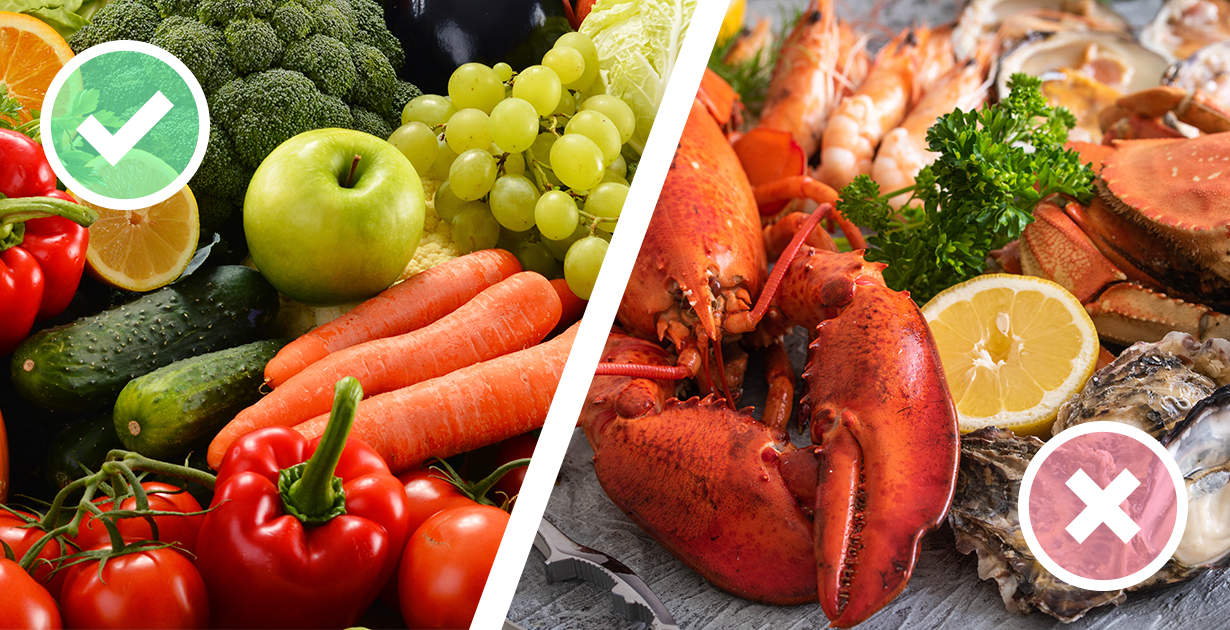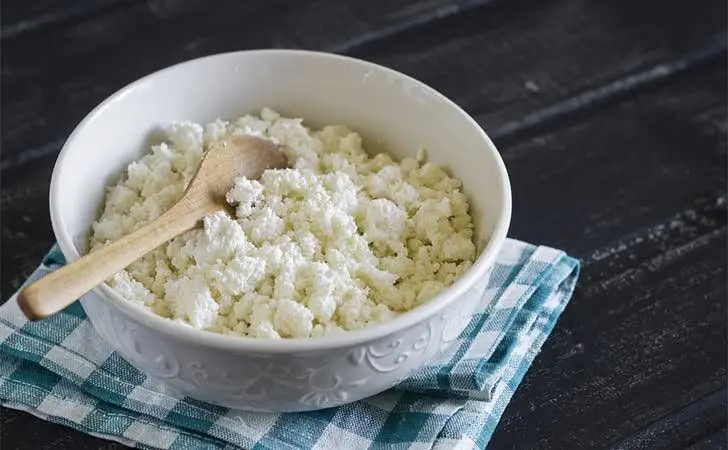Uric Acid Diet What You Need to Know

Uric acid is a waste product that is produced in the body when purines, which are found in certain foods, are broken down. Normally, uric acid is dissolved in the blood and excreted through the kidneys in urine. However, if uric acid levels in the blood become too high, it can lead to a condition called hyperuricemia.
Hyperuricemia can cause a number of health problems, including gout, kidney stones, and cardiovascular disease. A uric acid diet is a diet that is designed to lower uric acid levels in the blood and prevent these health problems.
Creating a Uric Acid Diet Chart: Tips and Tricks
Creating a uric acid diet chart can be a daunting task, but it is essential for managing hyperuricemia and preventing its associated health problems. Here are some tips and tricks for creating a uric acid diet chart:
Identify your purine intake
The first step in creating a uric acid diet chart is to identify your purine intake. Purines are found in a variety of foods, including meat, poultry, seafood, and certain vegetables. Some common high-purine foods include:
- Organ meats like liver and kidneys
- Red meats like beef, pork, and lamb
- Fatty fish like salmon, tuna, mackerel, and sardines
- Shellfish like lobster, shrimp, crab, and oysters
- Some vegetables like asparagus, spinach, peas, and mushrooms
You can find a more comprehensive list of purine-rich foods here. Take an inventory of the foods you currently eat and determine which ones are high in purines. This will give you a baseline for how much purine you are consuming.
Limit your purine intake
Once you know your purine intake, you can start to limit it. The recommended daily purine intake for people with hyperuricemia is 150-400 milligrams. This requires cutting down on high-purine foods. As a general rule, meat and seafood should make up no more than 4-6 ounces of your daily diet.
Some other ways to limit purine intake include:
- Choose leaner cuts of meat and remove skin from poultry
- Soak beans overnight and rinse thoroughly before cooking
- Limit beer and alcoholic beverages
- Drink plenty of water to help flush purines from body
Choose low-purine foods
There are many low-purine foods that you can enjoy on a uric acid diet. These foods will allow you to cut purines without compromising nutrition. Some good choices include:
- Most fruits and fruit juices
- Breads, cereals, pasta, rice
- Eggs, cheese, milk and dairy products
- Most vegetables like broccoli, cabbage, carrots
- Oils, butter and margarine
- Tea and coffee
Focus your diet around these low-purine foods in order to effectively lower your purine intake.
Avoid high-purine foods
In addition to limiting high-purine foods, there are some that should be completely avoided on a uric acid diet. These foods include:
- Organ meats like liver, kidneys, sweetbreads
- Game meats like venison, boar, bison
- Anchovies, sardines, herring
- Alcoholic beverages, especially beer
- Sugary drinks and foods
- Yeast extracts like Vegemite and Marmite
Avoiding these high-purine culprits is key to lowering uric acid levels through diet.
Drink plenty of fluids
Staying hydrated is important for overall health, but it is especially important for people with hyperuricemia. Drinking plenty of fluids helps to flush uric acid out of the body and prevent painful kidney stones.
Aim for at least 2-3 liters of fluids per day. Water is best, but mineral water, green tea, and fruit juices can also contribute to fluid intake. Limit sugary beverages like soda as they can raise uric acid levels. And go easy on coffee and alcohol as they tend to dehydrate the body.
Following a Uric Acid Diet Plan for Optimal Health
Following a uric acid diet plan is essential for managing hyperuricemia and preventing its associated health problems. Here are some tips for following a uric acid diet plan:
Make gradual changes
Don’t try to change your diet overnight. Drastically cutting purines can shock the body and actually increase uric acid levels. Start by making small changes, such as adding more fruits and vegetables to your meals or limiting your intake of red meat to a few times per week.
As your body adjusts, you can cut back further on high-purine foods and replace them with low-purine options. Pace yourself and make changes slowly and steadily.
Be patient
It takes time to see the benefits of a uric acid diet. Don’t get discouraged if you don’t see results immediately. Lowering uric acid levels through diet alone can take 3-6 months. Just keep at it and you will eventually see a difference.
Along the way, it helps to track your progress. Keep a food journal, get your uric acid levels tested regularly, and monitor symptoms like gout attacks. This can help you assess what diet changes work for you.
Talk to your doctor
If you are having trouble following a uric acid diet plan or if you have any questions about your diet, talk to your doctor. They can provide tailored advice based on your health history and specific needs. Certain medical conditions and medications can also affect uric acid, so it’s important to involve your doctor.
Some questions to discuss with your doctor include:
- How much purine can I safely consume per day?
- Do I need to take any supplements?
- How often should I get my uric acid levels tested?
- How strictly should I follow my diet plan?
Eat whole foods
Aim to eat whole, unprocessed foods as much as possible. Whole foods like fruits, vegetables, and unrefined grains are naturally lower in purines than processed foods. They also give you more nutritional bang for your buck.
Some easy ways to incorporate more whole foods include:
- Making salads and grain bowls loaded with produce
- Snacking on fresh fruit, vegetables with hummus
- Choosing minimally processed carbs like brown rice and oatmeal
- Drinking vegetable juice instead of soda
Focusing on whole foods provides natural purine control and health advantages.
Cook at home
Cooking at home gives you more control over the ingredients in your food. You can choose low-purine ingredients and avoid foods that are high in purines. Use healthy cooking methods like baking, broiling, grilling and steaming rather than frying food.
Cooking large batches of food ahead of time can make it easier stick to your uric acid diet when time is limited. Cook extra chicken breasts, make a big pot of vegetable soup, or roast a sheet pan of vegetables. Having healthy leftovers on hand prevents you from grabbing a quick processed meal.
Understanding Uric Acid Diet Restrictions and Guidelines
There are a number of uric acid diet restrictions and guidelines that you should follow in order to manage your hyperuricemia and prevent its associated health problems. These include:
Avoid alcohol
Alcohol is high in purines and can also dehydrate the body, which can lead to a buildup of uric acid. Beer is especially problematic when it comes to gout and high uric acid levels. If you choose to drink alcohol, limit intake to 1 drink per day for women and 2 drinks per day for men.
Limit your intake of fructose
Fructose is a type of sugar that is found in fruits, honey, and added sugars. There is evidence that fructose can accelerate purine breakdown and raise uric acid levels. Limit high-fructose foods like soda, candy, fruit juice and processed snacks. Enjoy whole fruits in moderation for the beneficial antioxidants and nutrients.
Maintain a healthy weight
Being overweight or obese can increase your risk of developing hyperuricemia. Losing weight can help to lower your uric acid levels. If you have significant weight to lose, losing just 5-10% of your body weight can make a difference.
Get regular exercise
Regular exercise can help to lower uric acid levels and improve overall health. Aim for at least 30 minutes of moderate-intensity exercise most days of the week. Brisk walking, swimming, cycling and jogging are all good options.
Start slowly if you don’t exercise regularly and build up intensity and duration over time. Stay well hydrated when exercising to prevent dehydration.
Take medication if prescribed
If diet and lifestyle changes are not enough to reduce your uric acid, your doctor may prescribe medication. This could include Xanthine oxidase inhibitors like allopurinol, febuxostat and pegloticase. These work by blocking uric acid production.
Be sure to take these medications exactly as prescribed. Stay on them even after your symptoms subside, as stopping them abruptly can cause recurrent gout flares.
Premature Ejaculation Causes, Treatment, and Prevention
Unlocking the Surprising Cranberry Benefits for Men
The Benefits of a Uric Acid Diet PDF Guide
Following a uric acid diet can seem complicated, but having a uric acid diet PDF guide can make it much more manageable. A comprehensive PDF guide offers many benefits:
Convenient access
A PDF guide gives you access to uric acid diet resources wherever you go. You can download it to your phone, tablet, laptop or desktop computer for handy access. Whether at home, at work, or dining out, you can easily look up recommended foods, portion sizes, recipes, etc.
Customization
A good PDF guide allows you to highlight and bookmark pages for quick reference. You can tailor it to your needs by flagging foods to enjoy or avoid, optimal serving sizes, and go-to recipes. Customizing your guide ensures you get the info you need most.
Visual aids
From images of meal ideas to handy infographics, a PDF guide employs visual aids to make the diet more understandable. Charts displaying purine counts or the best menu swaps stick better than plain text. Visual learners benefit greatly from PDF guides.
Physician input
Ask your doctor for diet recommendations that you can incorporate into your PDF guide. They may suggest tweaks based on your medications, lab results or other health conditions. Customizing for your specific needs can improve adherence and uric acid control.
Updated Information
PDF guides can be easily updated with the latest research on gout and uric acid diets. As new foods or preparation methods are identified, the guide can provide the most up-to-date, evidence-based recommendations.
Incorporating Vegetables into Your Uric Acid Diet
Most vegetables are low in purines, making them a smart addition to a uric acid diet. Vegetables provide key nutrients important for overall health. Here are some tips for incorporating more vegetables:
Make salads
Salads offer an easy way to bump up vegetable intake. Get creative with leafy greens, tomatoes, cucumbers, carrots, peppers and sprouts. Top with beans, avocado or a soft poached egg for extra protein. Dress with olive oil and lemon juice.
Add veggies at every meal
Get in the habit of adding veggies to breakfast, lunch and dinner. Enjoy mushrooms, peppers and onions in your morning omelet. Snack on carrot and celery sticks with hummus. Add broccoli, cauliflower or squash as a side at dinner.
Get sneaky
Puree vegetables like spinach, zucchini and carrots into pasta sauce, smoothies and baked goods. Grate vegetables like carrots and zucchini into muffins, quick breads and pizza dough. Roast vegetables like Brussels sprouts and beets to bring out natural sweetness.
Cook different ways
Prepare vegetables in different ways to take advantage of their versatility. Steam green beans, kale or collard greens as a simple side dish. Roast chunks of sweet potatoes, parsnips and turnips to caramelize flavors. Saute bok choy, napa cabbage and bell peppers for a quick stir fry.
Herbs and spices
Flavor vegetables with herbs and spices rather than salt for maximum nutritional benefit. Basil, cilantro, thyme, garlic and chili flakes all enhance vegetable dishes without adding purines. Lemon juice and vinegar also perk up flavors.
Top Foods to Include in Your Uric Acid Diet
Focusing on low-purine foods is key for a uric acid diet. Here are 10 of the top foods to emphasize:
Cherries
Cherries contain antioxidants that help reduce inflammation related to gout attacks. Enjoy 1⁄2 cup or about 10 cherries daily. Choose fresh, frozen (unsweetened) or juice forms.
Strawberries
Like cherries, strawberries also have anti-inflammatory benefits thanks to flavonoids called anthocyanins. Enjoy 1 cup per day, plain or sliced over cereal.
Bananas
Rich in potassium, bananas can help lower uric acid levels removed through urine. They make a great portable breakfast or snack. One medium banana provides about 450 mg potassium.
Egg whites
Egg whites provide quality protein sans extra purines or calories. Scramble an egg white omelet with veggies or add whites to a fruit smoothie.
Whole grains
High-fiber whole grains like oatmeal, brown rice and whole grain pasta are low-purine staples. Pair them with plant proteins like beans and nuts.
Bell peppers
Red, yellow and orange bell peppers contain vitamin C. This helps prevent uric acid crystal formation in joints and tissues. Eat them raw, roasted or sauteed.
Vegetable oils
Plant-based oils like olive, avocado and vegetable oil are almost 100% fat, so they don’t raise uric acid like animal fats. Use for cooking or dressings.
Low-fat dairy
Milk, yogurt and cheese made from low-fat (1%) or nonfat milk provide calcium, vitamin D and protein without excessive calories or purines.
Water
Staying hydrated helps flush uric acid from the body. Water is best; add sliced fruit or cucumber if you don’t like plain water.
Tea
Both black and green tea contain antioxidants that may help lower uric acid levels. Unsweetened varieties are best as added sugar increases purine counts.
Uric Acid Diet Chart in Bengali: A Comprehensive Guide
For native Bengali speakers, having uric acid diet information available in their own language allows for better understanding and adherence. Here is a comprehensive guide to a uric acid diet chart in Bengali:
Uric Acid Levels and Health
In Bengali: ইউরিক অ্যাসিড শরীরে পুরিন গ্রহণকারী খাদ্য থেকে তৈরি হয়৷ ইউরিক অ্যাসিডের মাত্রা যদি রক্তে বেড়ে যায় তাহলে হাইপারইউরিসেমিয়া হয়৷
This section outlines how purines lead to uric acid production and the health risks of hyperuricemia in Bengali.
Recommended Dietary Changes
In Bengali:
- পুরিন সমৃদ্ধ খাদ্য সেবন সীমিত করুন
- সবজি, ফল, স্বাস্থ্যকর চর্বি, ও অন্যান্য কম পুরিনের খাদ্য বাড়ান
- অল্প চর্বিযুক্ত দুগ্ধজাত খাদ্যগুলি খান
This section provides Bengali diet recommendations like limiting purines, increasing fruits/veggies, choosing low-fat dairy, etc.
Recommended Foods
In Bengali:
কম পুরিন যুক্ত খাদ্যদ্রব্যগুলির মধ্যে রয়েছেঃ
- কেলা, আপেল, আনারস, স্ট্রয়বেরি
- ভাত, রুটি, পাস্তা
- ডাল ও মটরশুঁটি
- ভেজা Here is the continuation of the article:
Foods to Avoid
In Bengali:
পুরিন সমৃদ্ধ এবং এড়িয়ে চলা উচিত খাদ্যদ্রব্যগুলির মধ্যে রয়েছেঃ
- মাংস ও মৎস্য
- অতিরিক্ত চর্বিযুক্ত দুগ্ধজাত খাদ্য
- মদ্যপান
- ফ্রুক্টোজ সমৃদ্ধ খাদ্য
This Bengali section covers high-purine foods to avoid like meats, seafood, alcohol, and fructose-rich foods.
Tips for Preparation
In Bengali:
রান্নার পদ্ধতি পুরিন সমৃদ্ধ খাদ্যের ঝুঁকি কমাতে সাহায্য করে।
- মাংস ও মৎস্যকে ভালভাবে পুষ্ট করুন
- ডালগুলিকে রাতে ভিজিয়ে রাখুন
- তেলাপান এড়িয়ে চলুন
Tips here include soaking beans, avoiding frying, and thoroughly cooking meats/fish.
Sample Menu for a Uric Acid Diet
When starting a uric acid diet, planning meals and snacks helps ensure low purine choices. Here is a sample daily menu:
Breakfast
1 cup oatmeal cooked with low-fat milk, topped 1⁄2 cup blueberries
1 egg white vegetable omelet with 1 ounce low-fat cheddar cheese
1 slice whole grain toast with 1 tablespoon almond butter
1 cup green tea
Lunch
Tuna salad sandwich made with 3 ounces water-packed tuna, 2 slices whole grain bread, lettuce, tomato
1 small whole wheat pita pocket stuffed with hummus, shredded carrots, cucumber
1 medium orange
1 cup sparkling water with lime
Snacks
10 whole grain crackers with 1 tablespoon peanut butter
1 medium banana
3 cups air-popped popcorn
Dinner
3 ounces baked salmon
1 cup roasted Brussels sprouts
1⁄2 cup cooked quinoa
Tossed salad with mixed greens, 1⁄4 cup chickpeas, 1⁄4 cup cherry tomatoes, balsamic vinaigrette
1 cup mixed berries with 1⁄4 cup plain Greek yogurt
This sample menu excludes alcohol and high-fat meats while emphasizing fruits, veggies, whole grains and plant proteins. Portion sizes are modest for weight management.
Foods to Avoid on a Uric Acid Diet
While focusing on low-purine foods is important, avoiding high-purine foods is equally key. Foods that should be limited or eliminated on a uric acid diet include:
Organ meats
Organ meats like liver, kidneys and sweetbreads have some of the highest purine counts. It’s best to avoid them altogether when following a uric acid diet.
Red meat
Cuts of beef, pork and lamb are higher in purines so they should be consumed sparingly, no more than about 3-4 ounces twice a week.
Certain seafood
Purine-rich fish like anchovies, sardines, scallops, trout and haddock should be avoided. Leaner seafood like cod, flounder, sole, shrimp and canned tuna can be eaten in moderation.
Yeast extracts
Foods like Marmite and brewer’s yeast are very high in purines. Eliminate them from your diet, even small amounts.
Sugary foods and drinks
Foods high in sugar and high fructose corn syrup can increase uric acid levels and should be limited as much as possible.
Alcohol
Alcohol interferes with the elimination of uric acid from the body. Especially avoid beer which is high in purines. Limit consumption to 1 serving per day max.
Refined carbs
Refined grains found in white bread, pastries, chips and baked goods may increase purine production. Choose whole grain options whenever possible.
Being mindful of high-purine culprits makes it easier stick to your uric acid diet. Check labels of packaged foods and ask about ingredients when dining out.
Uric Acid Diet in Marathi: How to Stay Healthy
Here is an overview of the uric acid diet recommendations translated into Marathi:
Introduction to Uric Acid
Marathi Translation:
युरिक आम्ल हे पुरिन्स नावाच्या पदार्थांचं विघटनानंतर शरीरात तयार होणारं एक कचरा पदार्थ आहे.
This introduces uric acid, purines and how uric acid forms in the body.
Effects of High Uric Acid Levels
Marathi Translation:
उच्च युरिक आम्ल स्तरामुळे गठिया, किडनीचे रोग व कार्डिओव्हॅस्क्युलर आजार होऊ शकतात.
Outlines health conditions tied to hyperuricemia like gout, kidney disease and heart problems.
Dietary Recommendations
Marathi Translation:
युरिक आम्लाचा आहार खालील गोष्टींवर भर देतो:
- पुरिन असलेले अन्न सीमित करा
- फळे, साखर मुक्त आहार व सब्जी वाढवा
- तुमचा वजन स्थिर ठेवा
Recommends limiting purines, increasing fruits/veggies, maintaining healthy weight in Marathi.
Key Foods to Include
Marathi Translation:
तुमच्या आहारात खालील पदार्थांचा समावेश करा:
- केळी, स्ट्रॉबेरी, पपई
- तांदळाचे पीठ, जवीन, साबुदाणे
- फांद्या, भाजीपाला, डाळी
- अंडी व सुका मेवा
Gives examples of low-purine foods to emphasize like berries, whole grains, veggies, eggs and nuts.
Conclusion
Following a uric acid diet requires rethinking food choices and preparation methods. But with consistent practice, it becomes second nature. Referring to comprehensive guides and resources makes adopting this diet more feasible.
Prioritizing low-purine whole foods, staying hydrated, maintaining a healthy weight and managing other lifestyle factors all contribute to lower uric acid levels. Work closely with your healthcare provider to find a dietary approach that optimizes your health and reduces risk of gout and other uric acid-driven conditions.
Unlocking the Value of Your Classic Car with NADA Classic Car Values
Discover the History and Features of the Iconic Alfa Romeo Montreal





















